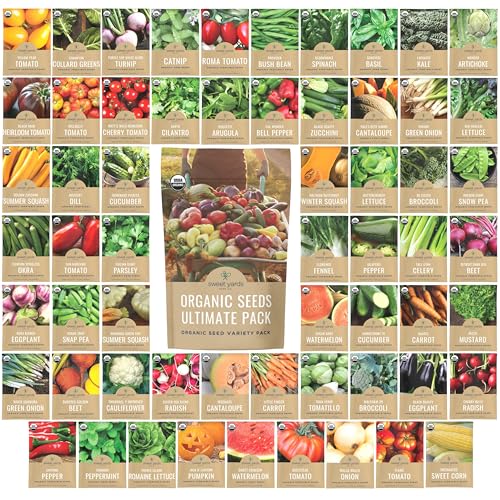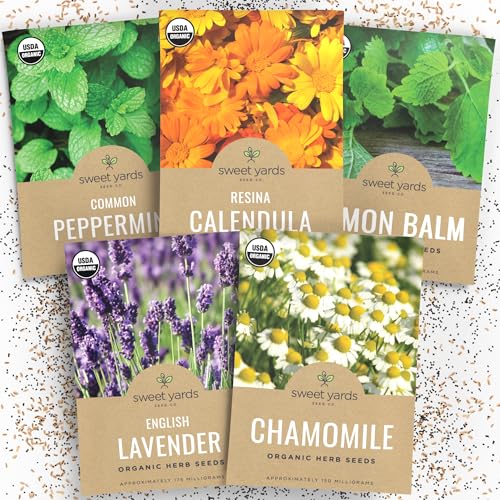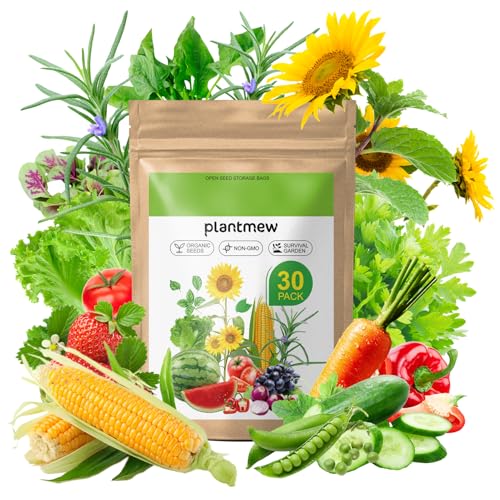Introduction
Organic farming has evolved from a niche practice to a mainstream agricultural movement, driven by consumer demand for healthy, chemical-free food and growing environmental consciousness. Many aspiring farmers assume that starting organic farming requires substantial capital investment, but the reality is quite different.
You can successfully launch an organic farming operation with minimal financial resources—what’s essential is smart planning, creativity, efficient resource use, and commitment to sustainable practices. The beauty of organic farming is that it often costs less than conventional agriculture once established, as you eliminate expensive synthetic inputs while building soil health naturally.
This comprehensive guide walks you through the practical steps to start organic farming on a budget, from soil preparation and crop selection through pest management and marketing. Whether you’re working with a backyard garden or a few acres, these strategies will help you build a productive, profitable organic operation without breaking the bank.
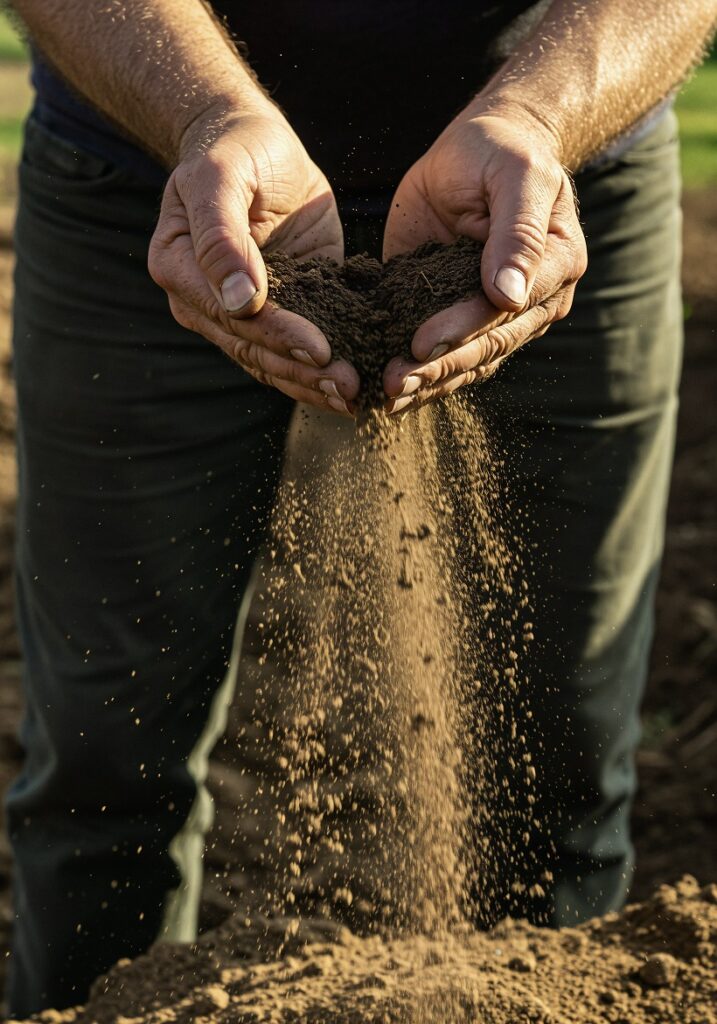
Understanding Organic Farming: Principles and Benefits
Before diving into the how-to, let’s clarify what organic farming truly means and why it’s worth pursuing.
What is Organic Farming?
Organic farming is a holistic production system that works with natural processes rather than against them. It excludes or strictly limits synthetic inputs while emphasizing:
Core Principles:
- Soil health: Building fertility through organic matter and biological activity
- Biodiversity: Encouraging diverse ecosystems and beneficial organisms
- Natural pest management: Using biological controls, barriers, and companion planting
- Sustainability: Working within natural cycles and renewable resources
- Transparency: Clear standards and certification processes
What Organic Farming Avoids:
- Synthetic pesticides and herbicides
- Chemical fertilizers
- Genetically modified organisms (GMOs)
- Synthetic growth hormones
- Irradiation
What Organic Farming Embraces:
- Compost and natural amendments
- Cover cropping and crop rotation
- Integrated pest management (IPM)
- Conservation practices
- Animal welfare standards (for livestock)
Why Start Organic Farming? Compelling Reasons
1. Strong Market Demand
The US organic food market reached $62 billion in 2023 and continues growing 8-10% annually. Consumer demand consistently outpaces domestic supply, creating excellent opportunities for new producers.
Market Statistics:
- Organic produce sales: $21 billion annually
- 80% of US families purchase organic foods
- Millennials and Gen Z show strongest organic preferences
- Premium pricing: 20-100% above conventional
2. Premium Pricing and Higher Profits
Organic products command significant price premiums that offset lower yields and higher labor:
Typical Organic Premiums:
- Lettuce: 30-60% premium
- Tomatoes: 40-80% premium
- Berries: 50-100% premium
- Herbs: 100-200% premium
- Specialty crops: Even higher
3. Reduced Input Costs
While organic farming is labor-intensive, it eliminates expensive synthetic inputs:
Cost Savings:
- No synthetic fertilizers ($150-300/acre saved)
- No chemical pesticides ($100-400/acre saved)
- No herbicides ($50-200/acre saved)
- Building soil fertility reduces long-term amendment needs
4. Environmental and Health Benefits
Beyond economics, organic farming offers significant non-monetary value:
- Improved soil health and structure
- Enhanced water retention and quality
- Increased biodiversity
- Carbon sequestration
- Reduced chemical exposure for farmers and consumers
- Support for pollinator populations
5. Market Differentiation
Standing out in crowded agricultural markets is challenging. Organic certification provides instant credibility and access to premium markets including:
- Whole Foods and natural food retailers
- Farmers’ markets (organic sections command higher traffic)
- CSA (Community Supported Agriculture) programs
- Farm-to-table restaurants
- Online organic delivery services
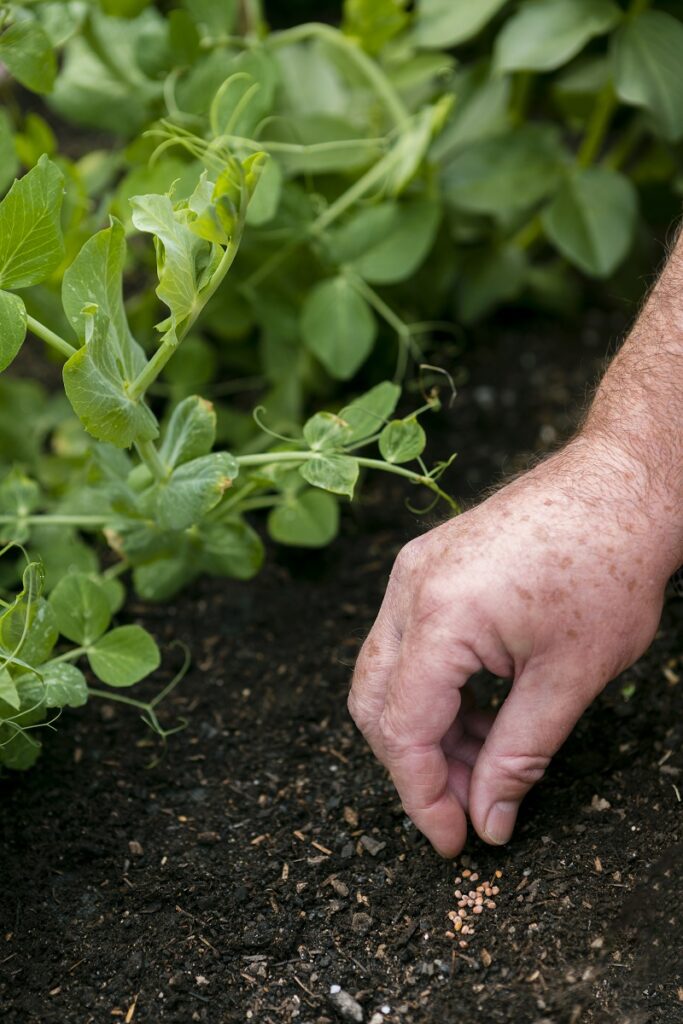
Getting Started: Essential First Steps for Organic Farming
Step 1: Assess Your Resources and Set Realistic Goals
Before planting a single seed, honestly evaluate what you have and what you need.
Land Assessment:
Starting Small is Smart:
- Backyard/urban: 500-2,000 sq ft
- Suburban lot: 2,000-5,000 sq ft (⅛ acre)
- Small acreage: 0.5-2 acres
- Larger operation: 2-10 acres
Quality over Quantity: A well-managed quarter-acre can generate $15,000-40,000 annually with intensive organic production.
Site Evaluation Checklist:
- Minimum 6-8 hours direct sunlight daily
- Access to water (well, municipal, or rainwater collection)
- Reasonably level terrain (or terracing potential)
- No recent history of chemical contamination
- Protection from strong winds (or windbreak potential)
- Proximity to markets (reduces transportation costs)
Financial Assessment:
Determine your startup budget realistically:
Minimum Investment Scenarios:
Ultra-Budget ($500-1,000):
- 1,000-2,000 sq ft intensive beds
- Basic hand tools
- Seeds and initial amendments
- Manual irrigation
Low-Budget ($2,000-5,000):
- 3,000-6,000 sq ft production area
- Quality tools and infrastructure
- Drip irrigation system
- Season extension materials
- Seeds, amendments, supplies
Moderate Investment ($5,000-15,000):
- Quarter to half-acre production
- Greenhouse or high tunnel
- Automated irrigation
- Walk-behind tractor or cultivator
- Comprehensive tool set
Time Commitment:
Be honest about available hours:
Part-Time (10-20 hours/week):
- Manageable: 1,000-4,000 sq ft
- Focus on high-value crops
- Keep operations simple
Full-Time (40+ hours/week):
- Manageable: 0.5-5 acres
- Diverse crop mix
- Market development
- Season extension
Step 2: Test and Improve Your Soil
Healthy soil is the foundation of organic farming. Invest time here and everything else becomes easier.
Soil Testing:
Where to Test:
- State university extension services ($15-40 comprehensive test)
- Private labs (more detailed analysis)
- USDA Natural Resources Conservation Service (sometimes free)
Essential Tests:
- pH level
- Nitrogen, phosphorus, potassium (NPK)
- Organic matter percentage
- Micronutrients (calcium, magnesium, sulfur)
- Heavy metals (if contamination suspected)
Interpreting Results:
Optimal Organic Soil Parameters:
- pH: 6.0-7.0 (varies by crop)
- Organic matter: 4-6% minimum (5-8% ideal)
- Good biological activity indicators
- Balanced nutrient ratios
Natural Soil Improvement Strategies:
Building Organic Matter (The Foundation):
High organic matter provides:
- Nutrient retention
- Water holding capacity
- Beneficial microbial habitat
- Improved structure
Free or Low-Cost Amendments:
Compost (Best Option):
- Make your own from kitchen scraps, yard waste, animal manure
- Source from municipal programs (often free or low-cost)
- Partner with landscapers (free leaves, grass clippings)
- Application: 1-3 inches annually
Manure:
- Connect with local stables, farms (often free for hauling)
- Must be composted 4-6 months (pathogen safety)
- Chicken manure: High nitrogen
- Cow/horse manure: Balanced nutrients
- Application: 20-40 lbs per 100 sq ft
Cover Crops (Soil Building Powerhouses):
- Legumes (peas, clover, vetch): Fix nitrogen
- Grasses (rye, oats): Build organic matter
- Brassicas (radish, mustard): Break compaction
- Cost: $20-80 per acre
- Plant in fall, till in spring
Leaves and Yard Waste:
- Collect from neighbors (free abundant resource)
- Shred for faster decomposition
- Use as mulch or compost ingredient
Wood Ash (Use Sparingly):
- Raises pH (use if soil is acidic)
- Provides potassium
- Don’t exceed 20 lbs per 1,000 sq ft
pH Adjustment:
Too Acidic (below 6.0):
- Add agricultural lime (calcitic or dolomitic)
- Wood ash (fast-acting)
- Crushed oyster shells
Too Alkaline (above 7.5):
- Add elemental sulfur
- Use acidifying amendments (pine needles, peat moss)
- Incorporate compost (gradually lowers pH)
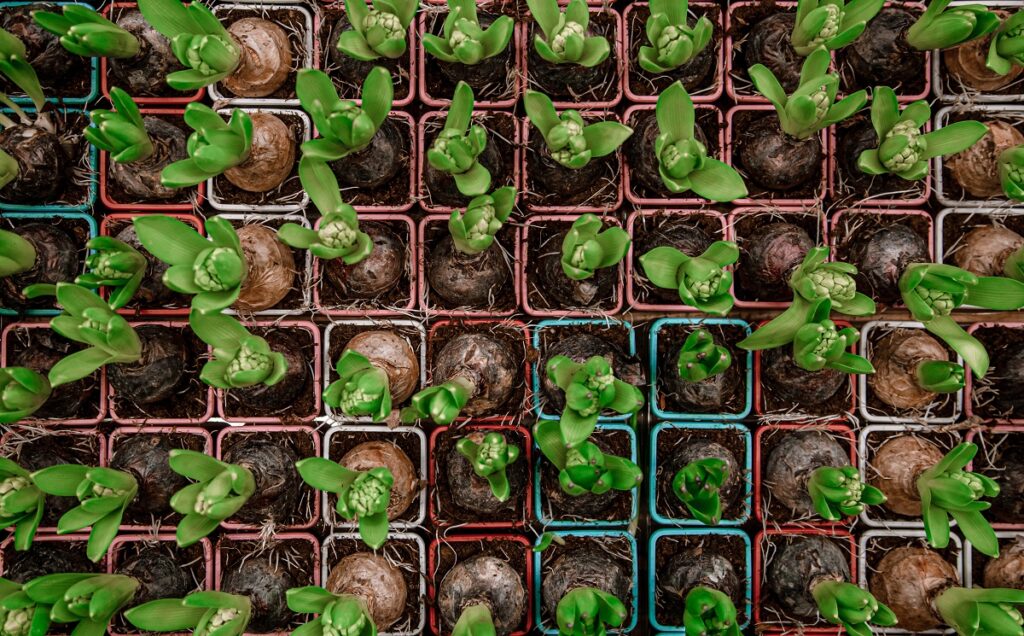
Crop Selection: What to Grow for Maximum Return
Smart crop selection dramatically impacts your success, especially with limited resources.
High-Value Crops for Organic Beginners
Criteria for Crop Selection:
- Quick maturity (fast return on investment)
- High market value per square foot
- Strong organic demand
- Relatively easy to grow organically
- Suitable for your climate and season
Top Organic Crops for Small-Scale Production:
1. Salad Greens and Leafy Vegetables
Why They’re Perfect:
- Fast growth (30-60 days)
- High turnover (multiple crops annually)
- Strong organic demand
- Easy pest management
- Excellent per-square-foot returns
Best Choices:
- Lettuce (butterhead, romaine, leaf varieties): $4-8/lb wholesale, $8-15/lb retail
- Arugula: Premium pricing, fast growth (35-45 days)
- Spinach: Fall/spring crop, high nutrition appeal
- Kale: Long harvest season, cold-hardy
- Chard: Colorful, continuous harvest
Production Notes:
- Succession planting every 2-3 weeks
- Protect from heat with shade cloth
- Harvest continually or as whole heads
2. Culinary Herbs
Why They’re Lucrative:
- Extremely high value per pound ($8-25/lb)
- Small space requirements
- Strong restaurant demand
- Many are perennial (plant once, harvest for years)
- Low pest pressure
Top Earners:
- Basil: Multiple varieties, huge demand ($12-20/lb)
- Cilantro: Fast growing, year-round demand
- Parsley: Biennial, reliable producer
- Mint: Perennial, invasive (contain it!)
- Rosemary, thyme, oregano: Perennial, drought-tolerant
Marketing Edge: Offer “living herbs” in pots for premium pricing.
3. Cherry Tomatoes
Why They Work:
- Higher prices than standard tomatoes ($4-8/lb organic)
- Continuous harvest over 2-3 months
- Strong consumer preference
- Less disease susceptible than large tomatoes
Best Varieties:
- Sungold (incredibly sweet, customer favorite)
- Black Cherry (unique color, rich flavor)
- Yellow Pear (prolific, eye-catching)
Production Tips:
- Use disease-resistant varieties
- Stake or cage properly
- Drip irrigation at base (keeps foliage dry)
4. Specialty Peppers
Why They’re Profitable:
- Premium pricing ($4-10/lb depending on variety)
- Long harvest season (3-4 months)
- Heat-loving (thrives in summer)
- Ornamental appeal
High-Value Types:
- Hot peppers (jalapeño, serrano, habanero)
- Sweet specialty (lunchbox, shishito)
- Unique varieties (purple, chocolate, striped)
5. Microgreens
Why They’re Ideal for Limited Space:
- Harvest in 7-21 days (fastest return)
- Extremely high value ($20-50/lb)
- Year-round indoor production possible
- Minimal space (200-500 sq ft profitable)
- Low startup costs
Popular Varieties:
- Sunflower shoots
- Pea shoots
- Radish
- Arugula
- Mixed blends
Market: High-end restaurants, juice bars, farmers’ markets
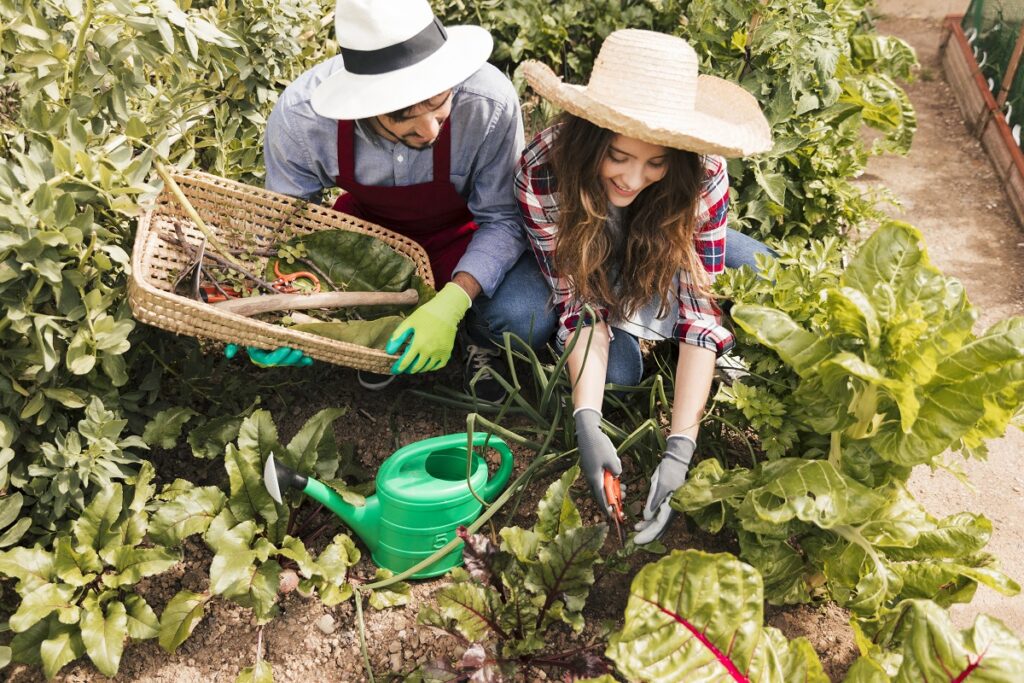
Low-Cost Organic Pest Management
Pest control without chemicals requires knowledge, observation, and creativity—not expensive products.
Integrated Pest Management (IPM) for Organic Farming
The IPM Pyramid:
Level 1: Prevention (Most Important)
- Healthy soil = strong plants = natural resistance
- Crop rotation (breaks pest cycles)
- Proper spacing (airflow reduces disease)
- Sanitation (remove diseased plants promptly)
Level 2: Monitoring
- Weekly scouting for pests and diseases
- Identify beneficial insects (don’t kill helpers!)
- Act early when populations are small
Level 3: Cultural Controls
- Row covers (physical barrier, $0.15-0.30/sq ft)
- Companion planting (confuses or repels pests)
- Timing plantings to avoid pest peaks
- Hand-picking (free, effective for low populations)
Level 4: Biological Controls
- Encourage beneficial insects (ladybugs, lacewings, parasitic wasps)
- Bt (Bacillus thuringiensis) for caterpillars (organic-approved)
- Beneficial nematodes for soil pests
Level 5: Organic Sprays (Last Resort)
- Use only when economic threshold reached
- Start with least toxic options
DIY Organic Pest Control Recipes
Soap Spray (Aphids, Mites, Soft-Bodied Insects):
- 1 tablespoon pure castile soap or dish soap
- 1 quart water
- Spray directly on pests
- Reapply after rain
Neem Oil Spray (Broad Spectrum):
- 2 tablespoons neem oil
- 1 tablespoon liquid soap (emulsifier)
- 1 gallon water
- Apply in evening (avoid direct sunlight)
- OMRI-approved for organic use
Garlic-Pepper Spray (Repellent):
- 1 bulb garlic, crushed
- 1 tablespoon cayenne pepper
- 1 quart water
- Steep overnight, strain, spray
- Repels many chewing insects
Diatomaceous Earth (Crawling Insects):
- Food-grade DE (not pool-grade!)
- Dust around plant bases
- Wear mask during application
- Reapply after rain
Companion Planting for Pest Reduction:
Beneficial Combinations:
- Basil + tomatoes (repels aphids, hornworms)
- Marigolds throughout (repels many pests)
- Nasturtiums (trap crop for aphids)
- Garlic/onions near brassicas (repels cabbage worms)
- Dill + brassicas (attracts beneficial wasps)
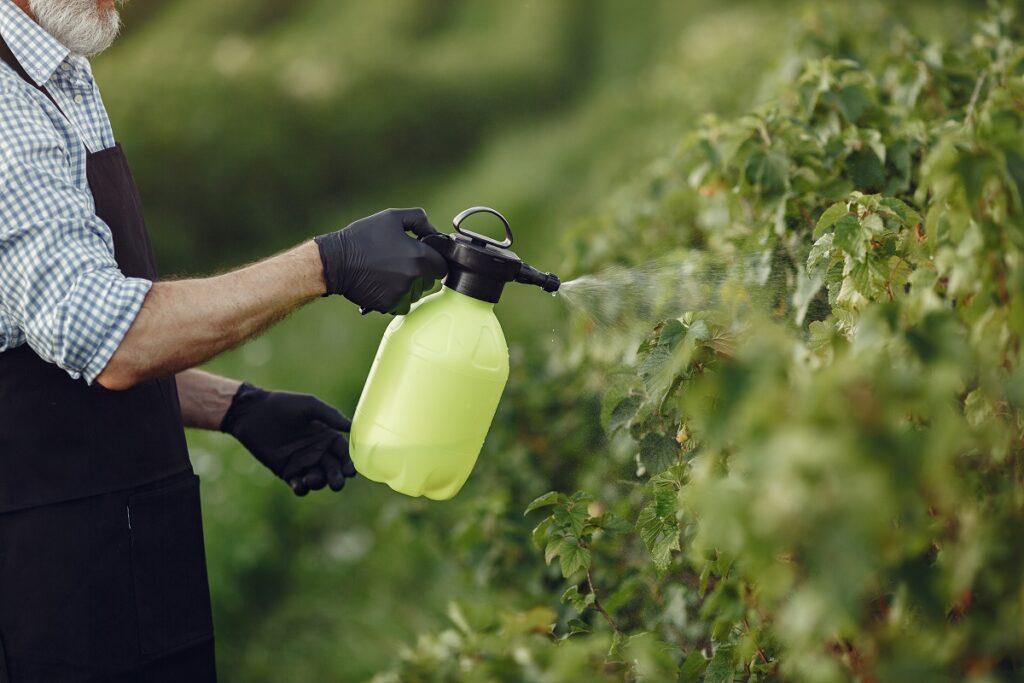
Water-Wise Irrigation on a Budget
Efficient irrigation conserves precious water and reduces costs.
Low-Cost Irrigation Solutions
1. Drip Irrigation (Best ROI)
Why Drip is Ideal:
- 30-50% less water than overhead
- Delivers water directly to roots
- Keeps foliage dry (reduces disease)
- Can be automated with simple timer
DIY Drip System ($100-300 for 1,000 sq ft):
- Mainline tubing (½ inch)
- Drip tape or soaker hose
- Pressure regulator
- Filter
- Fittings and connectors
Even Cheaper: Repurpose garden hoses with punctured holes as drip lines.
2. Mulch (Essential Water Conservation)
Benefits:
- Reduces evaporation by 70%
- Moderates soil temperature
- Suppresses weeds
- Adds organic matter as it decomposes
Free or Cheap Mulch Materials:
- Straw ($5-8 per bale, covers 100-200 sq ft)
- Leaves (free from neighbors)
- Grass clippings (herbicide-free only!)
- Newspaper (6-8 sheets thick)
- Cardboard (weed barrier, then cover with mulch)
- Wood chips (free from arborists/tree services)
Application: 3-4 inch layer, keep 2-3 inches from plant stems.
3. Rainwater Harvesting
Simple Systems:
- 55-gallon barrels under downspouts ($30-80 each)
- IBC totes (275-330 gallons, $50-150 used)
- Gravity-fed distribution (no pump needed)
Calculation: 1,000 sq ft roof captures ~600 gallons per inch of rain.
Benefits:
- Free water
- Better for plants (no chlorine)
- Reduces municipal water bills
- Drought insurance
4. Ollas (Traditional Method)
What They Are: Unglazed clay pots buried in soil that slowly seep water.
DIY Version:
- Two terra cotta pots glued together
- Bury with opening at soil surface
- Fill with water every few days
- Water seeps directly to root zone
Efficiency: Use 70% less water than surface watering.
Season Extension: Growing Year-Round Organically
Extending your growing season multiplies profits without additional land.
Low-Cost Season Extension Techniques
1. Row Covers (Simplest Method)
Floating Row Covers:
- Lightweight fabric draped over hoops or directly on plants
- Adds 2-8°F frost protection
- Extends spring and fall seasons
- Cost: $0.15-0.40/sq ft
- Reusable for 3-5 years
2. Cold Frames (Moderate Investment)
What They Are: Bottomless boxes with transparent lids, placed over crops.
DIY Construction:
- Scrap wood or straw bales for walls
- Old windows or polycarbonate sheet for top
- Cost: $20-100 depending on materials
Benefits:
- 10-20°F warmer than outside
- Grow greens through winter
- Start transplants early
3. Low Tunnels (Scalable)
Construction:
- PVC hoops or wire wickets over beds
- Greenhouse plastic cover
- Cost: $1-2 per linear foot
- DIY: Even cheaper with repurposed materials
Performance: Similar to cold frames but covers larger areas.
4. High Tunnel/Hoop House (Best Long-Term)
What It Is: Unheated greenhouse structure.
Investment: $1.50-4/sq ft (DIY) or $4-10/sq ft (kit)
Returns:
- 3-4 season growing
- 3-5x production increase
- Premium winter pricing
- ROI often achieved in 2-3 years
Cost-Reduction Strategies:
- Build yourself using plans (70% savings)
- Use used materials where safe
- Start small (10×20 ft) and expand
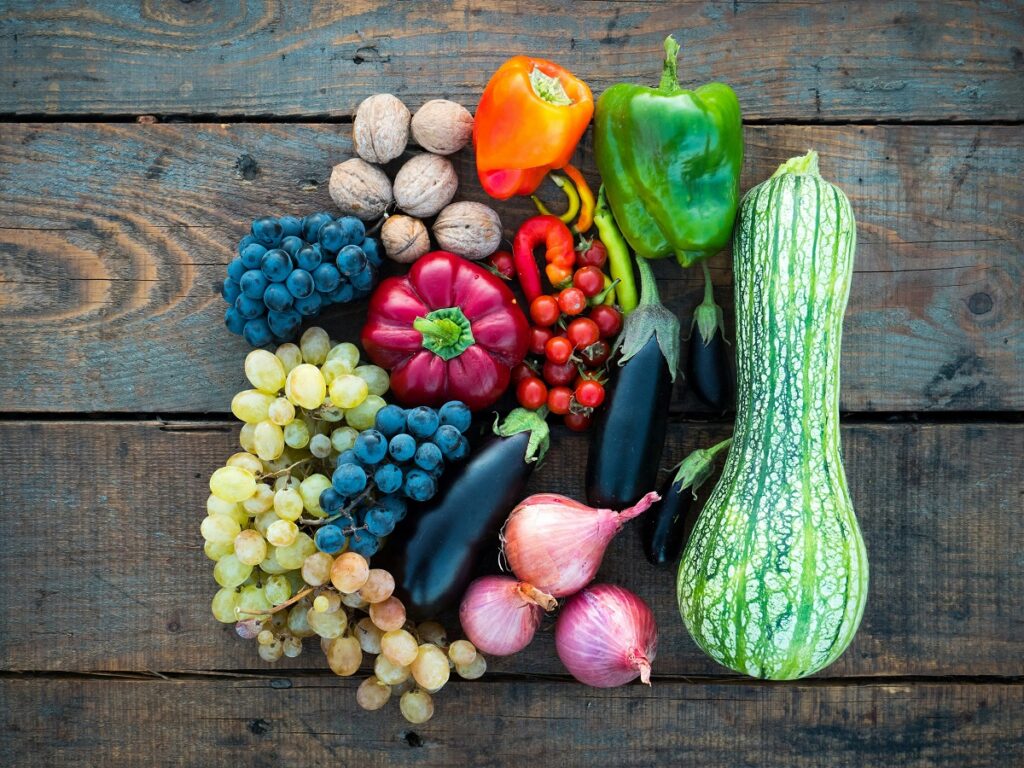
Marketing Your Organic Products
Growing great organic produce is only half the equation—connecting with customers completes the profit picture.
Direct-to-Consumer Channels (Highest Margins)
1. Farmers’ Markets
Advantages:
- Face-to-face customer relationships
- Immediate feedback
- Premium pricing
- Build loyal customer base
- Test new products
Tips for Success:
- Attractive, organized display
- Offer samples
- Tell your story (people buy from people)
- Accept card payments (Square, PayPal)
- Bring plenty of business cards
Pricing: Retail pricing (highest margins)
2. Community Supported Agriculture (CSA)
Model: Customers pay upfront for season’s harvest, receive weekly shares.
Advantages:
- Guaranteed income before season
- Reduced marketing effort
- Weather risk shared with members
- Builds community
Implementation:
- Start with 10-20 members
- Offer pickup at farm or delivery points
- Include newsletter with recipes
- Flexible share sizes
Pricing: $400-800 per season (20-26 weeks)
3. Farm Stand or U-Pick
Requirements:
- Roadside visibility
- Parking
- Signage
- Honor system or attended stand
Advantages:
- Minimal time investment
- Convenience for customers
- Impulse purchases
4. Online Sales and Home Delivery
Platforms:
- Create simple website with online ordering
- Use social media (Instagram, Facebook) for marketing
- Local food apps and directories
- Email newsletter for loyal customers
Delivery Options:
- Weekly routes through neighborhoods
- Drop points (libraries, community centers)
- Coordinate with other farms for efficiency
Wholesale Channels (Higher Volume, Lower Margins)
1. Restaurants and Chefs
Approach:
- Visit during off-hours (2-4 PM)
- Bring samples
- Emphasize quality, consistency, local story
- Start small with one or two items
Pricing: Expect 40-60% of retail
2. Local Grocery Stores
Strategy:
- Target independent stores and co-ops first
- Offer consignment initially
- Provide attractive packaging and labeling
- Maintain reliable supply
Pricing: Expect 50-70% of retail, payment often Net 30 days
Building Your Organic Brand
Certification Considerations:
USDA Organic Certification:
- Required to use “certified organic” label
- 3-year transition period (land must be chemical-free)
- Annual inspection and fees ($500-2,000 depending on operation)
- Worth it for: Wholesale accounts, premium pricing, credibility
Alternatives Before Certification:
- “Grown without pesticides”
- “Naturally grown”
- “Beyond organic”
- “Practicing organic methods”
- Participate in Participatory Guarantee Systems (PGS)
Marketing Your Story:
Organic customers want connection:
- Share farming methods
- Post photos of your operation
- Explain why you farm organically
- Highlight environmental benefits
- Feature recipes using your products
Calculating Costs and Projecting Profits
Understanding the financial reality helps you make informed decisions and set realistic expectations.
Sample Budget: Quarter-Acre Intensive Organic Production
Startup Costs (One-Time):
- Hand tools: $300-500
- Drip irrigation system: $400-800
- Row covers and season extension: $300-600
- Seeds and transplants: $200-400
- Soil amendments (initial): $300-600
- Harvest and storage supplies: $200-400
- Total Startup: $1,700-3,300
Annual Operating Costs:
- Seeds and transplants: $400-800
- Organic amendments and inputs: $300-600
- Water (if metered): $100-300
- Farmers’ market fees: $400-1,000 (20 weeks)
- Packaging and marketing: $300-600
- Certification (if applicable): $500-1,500
- Miscellaneous: $200-400
- Total Annual Operating: $2,200-5,200
Revenue Projections (Quarter-Acre, Year 2+):
Conservative Scenario:
- Average production: $8-12/sq ft annually
- Quarter-acre = 10,890 sq ft
- Gross revenue: $87,000-131,000
- Less operating costs: $2,200-5,200
- Net profit: $82,000-126,000 (before labor and taxes)
Realistic Scenario (Part-Time):
- Actual production: $4-6/sq ft (accounting for paths, learning curve)
- Gross revenue: $44,000-65,000
- Less operating costs: $3,000-4,000
- Net profit: $40,000-61,000
Notes:
- First year often 30-50% lower while learning
- Labor not included (your sweat equity)
- Assumes direct-to-consumer sales (highest margins)
- Intensive production requires significant time investment
Common Mistakes to Avoid When Starting Organic Farming
Learn from others’ errors to accelerate your success.
Mistake #1: Starting Too Large
The Problem: Enthusiasm leads to planting more than you can manage.
The Solution: Start with 1,000-3,000 sq ft. Master techniques, then expand.
Mistake #2: Neglecting Soil Health
The Problem: Rushing to plant without building soil fertility.
The Solution: Invest first year in soil building. Short-term patience yields long-term rewards.
Mistake #3: Growing Too Many Varieties
The Problem: Jack of all trades, master of none. Overwhelming variety.
The Solution: Focus on 5-10 crops initially. Perfect these, then diversify.
Mistake #4: No Market Research
The Problem: Growing what you like, not what sells.
The Solution: Survey potential customers. Visit farmers’ markets. Identify unmet demand.
Mistake #5: Underestimating Time Requirements
The Problem: Thinking organic farming is passive.
The Solution: Plan for consistent daily attention, especially during peak season.
Mistake #6: Poor Record Keeping
The Problem: Repeating mistakes, unable to track profitability.
The Solution: Simple notebook or app. Record plantings, harvests, sales, observations.
Resources for Organic Farmers
Educational Resources
Government and Universities:
- USDA National Organic Program (certification info)
- eOrganic (research-based organic resources)
- State university extension services
- ATTRA (National Sustainable Agriculture Information Service)
Organizations:
- Organic Farming Research Foundation
- Rodale Institute
- Northeast Organic Farming Association (NOFA)
- Similar regional organic organizations
Online Learning:
- YouTube channels (no-till growers, market gardeners)
- Podcasts (Market Gardener, Organic Farmer podcasts)
- Online courses (Rodale, various universities)
Financial Assistance
USDA Programs:
- Organic Certification Cost Share (reimburses 75% of certification costs, up to $750)
- Environmental Quality Incentives Program (EQIP) – Organic Initiative
- Conservation Stewardship Program
- Beginning Farmer and Rancher Development Program
State and Local:
- State departments of agriculture (grants, cost-share)
- Local food councils
- Community foundations
Image Suggestion 8: Organic farmer using mobile app for farm record keeping
Alt Text: “Organic farmer using smartphone app for crop planning and farm management records”
Conclusion: Your Organic Farming Journey Begins Now
Starting organic farming on a budget is not only possible—it’s a proven path thousands of farmers have successfully taken. The key is beginning with realistic expectations, focusing on high-value crops, building soil health as your foundation, and connecting directly with customers who value what you’re growing.
Essential Principles to Remember:
✓ Start small and scale gradually – Better to succeed with 1,000 sq ft than fail with an acre
✓ Prioritize soil health – Everything flows from healthy, living soil
✓ Focus on high-value crops – Maximize returns from limited space
✓ Master a few crops first – Depth before breadth
✓ Build direct customer relationships – Premium pricing and loyalty
✓ Keep detailed records – Learn and improve continuously
✓ Stay patient and persistent – Skills and profitability compound over time
The organic farming movement needs more dedicated growers producing high-quality food for their communities. You don’t need extensive land, expensive equipment, or an agriculture degree—you need willingness to learn, commitment to sustainable practices, and connection with your customers.
Your first season won’t be perfect. You’ll make mistakes, lose crops to pests, and wonder if you’re doing it right. That’s completely normal. Every successful organic farmer started exactly where you are now, with more questions than answers and more enthusiasm than experience.
Your Next Steps:
- This week: Assess your land, test your soil, set your budget
- This month: Create a simple growing plan, order seeds, build beds
- Next season: Plant your first crops and begin learning
- Long-term: Build your soil, refine your skills, grow your customer base
The journey from backyard garden to profitable organic farm isn’t quick, but it’s incredibly rewarding. You’re not just growing food—you’re building soil health, supporting biodiversity, nourishing your community, and creating a sustainable livelihood.

